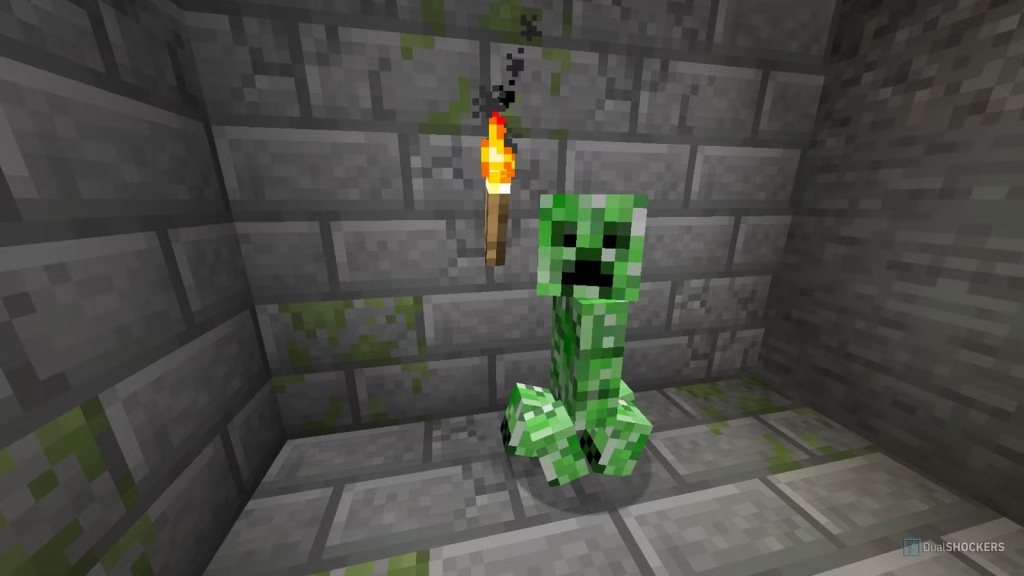While Mojang continues adding mob variants like Husks, Strays, and the newly announced Parched skeletons, one creature remains untouched—the Creeper. Despite community requests for biome-specific variants, there are compelling reasons why Minecraft’s most iconic mob should stay exactly as it is.
Table of Contents
Minecraft Creeper’s Iconic Status
| Creeper Facts | Details |
|---|---|
| Origin | Created from a pig coding bug by Notch |
| First Appearance | Minecraft Alpha (2009) |
| Mob Type | Hostile, explosive |
| Spawn Conditions | Light level 0, solid blocks |
| Variants | Charged Creeper (lightning struck) only |
| Cultural Impact | Face of Minecraft brand worldwide |
Why Variants Would Diminish the Original
1. The Face of Minecraft Can’t Be Diluted
Creepers are literally the face of the game, serving as the most recognizable symbol in Minecraft’s branding. Their distinctive green texture, hollow dark eyes, and iconic “ssss” hissing sound are burned into gaming culture. Creating variants would fragment this unified identity that took over a decade to establish.
Even people who’ve never touched Minecraft recognize that blocky green creature. Imagine if Mario suddenly had five different colored variants—it would weaken the character’s cultural impact. The same logic applies here.
2. Mojang Has Already Overused the Variant Formula
In 2025 alone, Mojang has already created loads of different mob variants, including zombie horses, Parched skeletons, and Camel Husks. The variant approach has become predictable and somewhat lazy from a design perspective.
Adding creeper variants would feel like checking a box rather than innovating. Players are experiencing variant fatigue—not every mob needs a desert cousin or snowy sibling.
3. Creepers Work Because They’re Consistent
While players will find all kinds of different mob variants based on warm and cold biomes, the creeper is one mysterious, annoying creature that should remain the same and familiar. Part of what makes creepers effective is their predictability. Players know exactly what to expect, which creates tension without confusion.
When you hear that distinctive hiss, your heart drops—regardless of which biome you’re exploring. That universal threat wouldn’t exist if jungle creepers behaved differently from desert creepers.
4. The Creeper Wouldn’t Exist in Modern Minecraft
According to Jens Bergensten, Minecraft’s current CEO, “If you were to follow the rules that we have today, we would probably not add the Creeper. Because it would actually be so controversial to have a monster that would show up and destroy what you built”.
Over the years, developers have taken a rather peaceful and non-violent stance in terms of updates. Modern mobs like the Creaking damage players but don’t devastate builds. The Creeper survives only because of its historic significance—changing it now would betray that legacy.
What Makes Creepers Special
The Creeper’s origin story is legendary. Notch mixed the height and width values when coding a pig, creating a standing creature that looked eerily at players. A friend suggested it should explode, and gaming history was made.
This happy accident became more important than any intentionally designed mob. Its staying power comes from simplicity, not complexity.
Better Alternatives to Variants
Instead of diluting the Creeper brand with variants, Mojang should:
- Improve existing creeper mechanics (better AI, smarter pathfinding)
- Add entirely new explosive mobs for different biomes
- Expand the charged creeper mechanic with additional lightning effects
- Create new build-threatening challenges that aren’t creeper reskins
Frequently Asked Questions
Wouldn’t biome-specific creeper variants make exploration more exciting?
While biome variants sound appealing on paper, they’d actually weaken Minecraft’s exploration experience. The beauty of creepers is their universal threat—whether you’re in a jungle temple or snowy tundra, that green explosive menace keeps you alert. Creating variants like “snow creepers” or “desert creepers” would turn an iconic threat into another checklist item for the Minecraft wiki. Players would quickly learn which biomes have which creepers, removing the element of surprise. Additionally, fragmenting the creeper’s identity across multiple variants would dilute the brand recognition that makes this mob special. Mojang has proven they can create entirely new mobs for biome-specific threats without needing to reskin existing icons.
Since other mobs like zombies and skeletons have variants, isn’t it unfair that creepers don’t?
The comparison between creepers and other hostile mobs misses a critical point: creepers occupy a unique position in Minecraft’s cultural hierarchy. Zombies and skeletons are generic fantasy creatures that appear in countless games—their variants don’t fundamentally alter their cultural identity. Creepers, however, are uniquely Minecraft’s creation and serve as the game’s primary mascot. They appear on t-shirts, backpacks, promotional materials, and even the game’s logo. No other mob carries this responsibility. While husks and strays successfully diversify skeleton combat, the creeper’s explosive mechanic and distinctive design are already perfectly tuned. Mojang’s decision to protect the creeper’s singular identity actually shows wise restraint—some icons are better left untouched, celebrated for what they’ve always been rather than what they could become.
